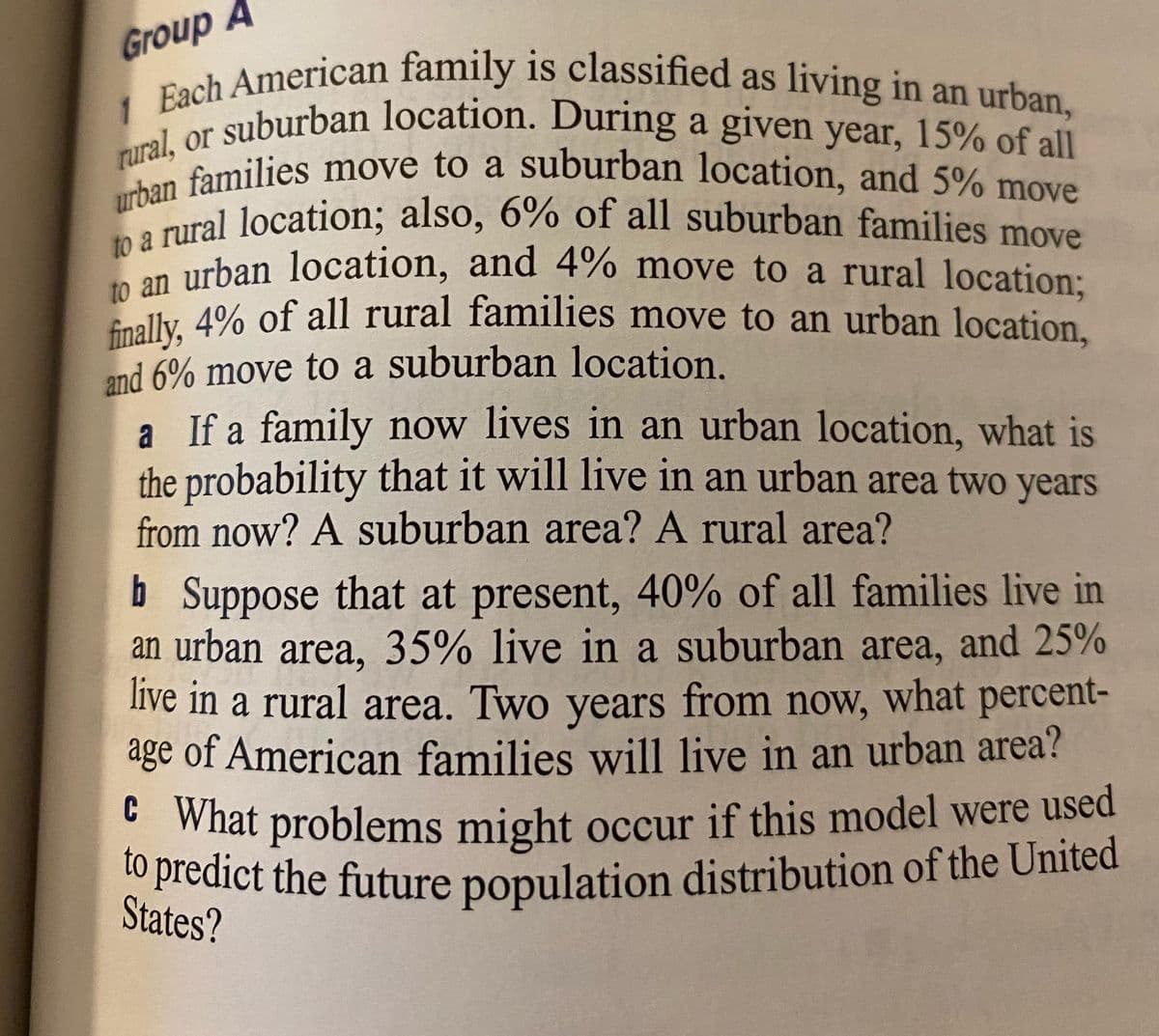1 Each American family is classified as living in an urban, rural, or suburban location. During a given year, 15% of all urban families move to a suburban location, and 5% move to a rural location; also, 6% of all suburban families move 10aurban location, and 4% move to a rural location: Enally 4% of all rural families move to an urban location. and 6% move to a suburban location. a If a family now lives in an urban location, what is the probability that it will live in an urban area two years from now? A suburban area? A rural area? b Suppose that at present, 40% of all families live in an urban area, 35% live in a suburban area, and 25% live in a rural area. Two years from now, what percent- age of American families will live in an urban area? E What problems might occur if this model were used to predict the future population distribution of the United States?
Inverse Normal Distribution
The method used for finding the corresponding z-critical value in a normal distribution using the known probability is said to be an inverse normal distribution. The inverse normal distribution is a continuous probability distribution with a family of two parameters.
Mean, Median, Mode
It is a descriptive summary of a data set. It can be defined by using some of the measures. The central tendencies do not provide information regarding individual data from the dataset. However, they give a summary of the data set. The central tendency or measure of central tendency is a central or typical value for a probability distribution.
Z-Scores
A z-score is a unit of measurement used in statistics to describe the position of a raw score in terms of its distance from the mean, measured with reference to standard deviation from the mean. Z-scores are useful in statistics because they allow comparison between two scores that belong to different normal distributions.

Trending now
This is a popular solution!
Step by step
Solved in 3 steps with 2 images


